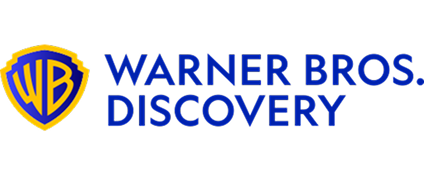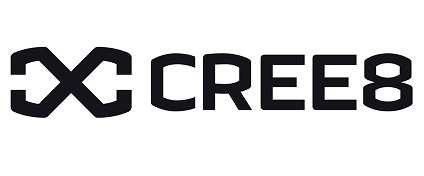South Korea’s Top Film Distribution Companies [2025]
![South Korea's Top Film Distribution Companies [2025] 1 South Korea's Top Film Distribution Companies](https://vitrina.ai/wp-content/uploads/2025/10/South-Koreas-Top-Film-Distribution-Companies-1.png)
Introduction
The acquisition of global distribution rights for premium content has always been a high-stakes endeavor, but the landscape of the South Korea’s Top Film Distribution Companies has elevated this complexity to a new level.
The explosive and sustained global demand for K-Content—from Oscar-winning features to record-breaking streaming series—has transformed a regional market into a pivotal global supply hub.
For the Content Acquisition Executive, this presents a dual challenge: unparalleled opportunity is matched only by the difficulty of achieving precise, verifiable due diligence.
The strategic choice of a distribution partner determines whether a project achieves its full international revenue potential or is confined to regional success. Without clear visibility into a company’s financial health, their actual territory strength beyond a single theatrical release, or their digital channel expertise, an investment decision is reduced to an unacceptable gamble.
This guide breaks down the strategic imperative and provides a proprietary evaluation framework, anchored by a curated list of global distribution companies positioned to capitalize on the K-Content export trend in 2025.
Table of content
- Setting the Stage: The Billion-Dollar Imperative in K-Content Global Distribution
- Our Evaluation Framework: Vetting Your Next K-Content Distribution Partner
- The Top Film Distribution Companies for K-Content Strategy
- How to Integrate These Partners: A Strategic Roadmap for Acquisition
- How Vitrina Helps You Master Content Distribution Intelligence
- Conclusion: Precision is the New Competitive Edge
- Frequently Asked Questions
Key Takeaways
| Core Challenge | Fragmented data makes vetting international distribution partners for South Korean content opaque and inefficient. |
| Strategic Solution | Employ a unified, data-driven framework to assess a distribution partner’s track record, financial stability, and territorial reach. |
| Vitrina’s Role | Providing the deep-dive company and project metadata necessary to conduct rigorous, anti-hallucination due diligence for partnership selection. |
Setting the Stage: The Billion-Dollar Imperative in K-Content Global Distribution
The South Korean content sector is far more than a cultural phenomenon; it is a major global economic force demanding executive attention. According to Invest Korea data, the Korean content market was estimated at approximately USD 42.9 billion in 2024, positioning it as a significant global player.
While exports saw a minor dip in 2023, reaching USD 12.96 billion, titles like Netflix’s Squid Game 2 continue to demonstrate the undeniable, massive appetite for premium K-Content on a worldwide scale.
This immense global pull creates both unprecedented opportunity and critical risk for content acquisition leaders. The core of this challenge lies in the supply chain itself: the content is made in Korea, but its monetization is inherently global.
The traditional path to securing international rights—relying on established, domestic Korean giants like CJ ENM or Lotte Entertainment—remains vital, but it is incomplete.
The true strategic edge is found in identifying and partnering with agile global and regional film distribution companies that can effectively manage a film or series’ lifecycle outside of South Korea, navigating the mosaic of territorial rights, localization requirements, and platform-specific deals.
The problem is that the data required to qualify these international partners is highly fragmented. Acquiring executives often wrestle with opaque cross-border transactions, struggling to verify the true track record of a distribution company in a given territory (a critical pain point in the entertainment supply chain).
When a film requires distribution in the CIS region, the Baltics, or a niche genre segment in North America, relying on a domestic Korean firm’s limited global scope is a strategic disadvantage.
Therefore, the strategic mandate is to shift the focus from merely identifying a “Korean” company to identifying a distribution company with the verifiable expertise to handle Korean content in key global territories. This strategic pivot ensures the massive investment in K-Content production is matched by an equally effective global distribution strategy.
Our Evaluation Framework: Vetting Your Next K-Content Distribution Partner
In an environment where a single acquisition can define a year’s P&L, relying on reputation alone is insufficient. I recommend a four-pillar framework designed to eliminate guesswork when evaluating any potential film distribution partner, regardless of their primary HQ location. This approach shifts the focus from nationality to verifiable execution capacity.
1. Track Record & Thematic Expertise
The first step is moving beyond superficial film credits to analyze a company’s specific distribution successes. A firm may have 100 titles, but what is their track record with K-Content or a similar genre/language? You must track the percentage of their releases that achieved critical mass in the target territory. This requires granular data on past collaborations, project volume, and verifiable box office or platform success. A distributor specializing in North American indie features is a fundamentally different strategic fit than one with deep ties to the theatrical landscape in Southeast Asia, even if both are technically international.
2. Verified Territory Reach and Rights Holding
A global deal often masks a weak physical distribution footprint or a shallow history of rights management. The executive must ascertain the specific rights the company has historically managed (theatrical, VOD, TV, digital) and in which precise territories they possess an established, operational presence. A company claiming “global reach” but lacking a tangible history of deals across Latin America, for example, is a costly risk. We seek evidence of recurring distribution activity in specific, complex, or high-value markets.
3. Digital Channel Mastery
The K-Content pipeline is now dominated by the digital supply chain. Your distribution partner must demonstrate clear mastery of the VOD and SVOD landscape. This is not simply about having access to major streamers but understanding the deal structures and content delivery specifications required by niche, regional platforms. The ability to manage complex distribution and licensing deals across multiple digital storefronts is now a prerequisite for maximizing monetization. An antiquated approach focused only on theatrical windows will leave significant digital revenue on the table.
4. Financial Health and Operational Stability
The volatility of the M&E sector necessitates a clear-eyed view of a partner’s financial standing. You need to know that the distributor will be solvent through the typical 18-24 month distribution cycle. Without access to deep financial metadata, the executive is flying blind. A strategic intelligence platform provides a vital, non-subjective layer of due diligence by profiling key executives, corporate structure, and recent funding rounds, ensuring you partner with a stable, well-capitalized entity capable of supporting the marketing and administrative costs of a global release.
The Top Film Distribution Companies for K-Content Strategy
Leveraging the established framework, this curated list features global film distribution companies positioned as potential partners for the acquisition and international distribution of South Korean IP. These entities operate across major markets, making them relevant for K-Content executives seeking strategic alliances to expand global reach and optimize content monetization.
- Top Film Baltic
Operating across Latvia, Lithuania, and Estonia, Top Film Baltic specializes in theatrical and home entertainment releases across the Baltic territories. The company is noted for its deep understanding of localized consumer behavior and market-specific media landscapes within this strategic European subregion. - Top Film CIS
Top Film CIS focuses on the Commonwealth of Independent States (CIS) region, managing rights and releases across diverse markets. The company is recognized for navigating complex media regulations and audience dynamics across territories such as Russia, Kazakhstan, and Ukraine. - Top Film Distribution
A seasoned player in the global distribution space, Top Film Distribution manages theatrical, television, and home video releases. The firm’s diversified portfolio includes both local productions and international blockbusters, positioning it as a partner for wide-market distribution strategies. - Purdie Distribution
Based in the United States, Purdie Distribution specializes in the family and faith-based market segment. The company focuses on theatrical and ancillary distribution for content aligned with its thematic and moral standards, making it a strong partner for targeted North American audiences. - Atlas Distribution
Atlas Distribution supports global content delivery through multi-channel strategies, including theatrical, broadcast, and digital releases. Its expertise lies in coordinating market entry, release logistics, and platform integration for international partners. - Indigenous Film Distribution
Indigenous Film Distribution champions culturally specific and independent content, often starting with festival circuit releases before expanding to broader markets. The company’s model emphasizes authenticity, representation, and non-traditional audience engagement strategies. - SFC Film Distribution Company
SFC Film Distribution Company manages a global catalog of independent films and television content. Its operations include international sales, rights acquisition, and licensing facilitation for producers seeking access to a wide network of distribution partners. - OBrother Distribution
OBrother Distribution handles both theatrical and non-theatrical releases, with a focus on regional markets where it holds operational depth. The company is adept at managing logistics and technical requirements for platform delivery and cinema exhibition. - NMG Film Distribution
NMG Film Distribution offers end-to-end services, from rights evaluation and market screening to technical delivery and licensing. Its expertise in multi-platform rollout strategies makes it an adaptable partner for producers and financiers alike. - Leonine Distribution
Leonine Distribution, a division of Germany’s LEONINE Studios, operates across production, distribution, and licensing within the German-speaking market. The company plays a central role in European content acquisition and distribution, offering access to theatrical, home entertainment, and SVOD channels in Central Europe.
How to Integrate These Partners: A Strategic Roadmap for Acquisition
Vetting is only the first half of the equation; the second is the execution of a successful partnership. The executive’s role is to transition from strategic analysis to tactical negotiation and post-deal oversight. This roadmap outlines the key phases required to maximize the ROI of a distribution agreement in the context of high-demand content like K-Content.
Phase 1: Rights Negotiation and Risk Allocation
When dealing with South Korea’s Top Film Distribution Companies or high-stakes international partners, the focus must be on granular rights definitions. Do not accept broad “VOD rights.” Demand precision on platform, windowing, and exclusivity. Crucially, the negotiation must allocate risk transparently, specifically around marketing Minimum Guarantees (MGs). A common pitfall is agreeing to a large MG without a corresponding, verifiable, and minimum marketing spend commitment from the distributor. Use data to track the partner’s historical marketing spend per title scale to inform your negotiation stance.
Phase 2: Mastering Digital Asset Delivery and Packaging
The M&E supply chain’s greatest inefficiency is content delivery. A successful distribution partner must be able to handle complex packaging and delivery requirements for hundreds of different digital storefronts, broadcasters, and physical media factories globally. This requires expertise in highly technical specifications, from IMF mastering to complex metadata tagging. You must audit the distributor’s technical capacity to ensure they are not a bottleneck. Inefficient delivery can delay a global window by weeks, drastically impacting revenue.
Phase 3: Post-Acquisition Tracking and Auditing
The deal is not done when the contract is signed; it is only just beginning. The greatest challenge for content financiers is the lack of post-release visibility. How can you verify that the agreed-upon marketing spend occurred, or that the royalty report accurately reflects the title’s performance across 15 different territories? The antiquated method of quarterly spreadsheet reports is obsolete. You must use intelligence tools to continuously monitor the distributor’s public claims, verify their box office and streaming presence, and cross-reference key metrics to proactively identify discrepancies.
How Vitrina Helps You Master Content Distribution Intelligence
Vitrina is purpose-built to eliminate the data asymmetry that plagues the content distribution and licensing business. By focusing exclusively on the business-level dynamics of the entertainment supply chain, Vitrina provides the essential strategic intelligence that content acquisition and distribution executives need to execute their roadmap.
Unifying Fragmented Intelligence
Vitrina cuts through the noise of press releases and self-reported data. The platform tracks over 1 million film and TV projects and profiles over 3 million industry executives and companies globally.
This scale allows you to not just find a distributor but to map their complete collaboration history. You can filter the market by genre, region, project budget, and deal type, allowing you to instantly identify companies with a proven track record of successfully distributing content similar to your current needs—be it K-Content or any other niche.
Pre-Vetting for De-Risking
The ability to de-risk a partnership is Vitrina’s core value proposition. Our Project Tracker provides real-time alerts on content movements through the supply chain—from development through post-production to final release.
This allows the executive to track the activities of potential partners and to verify claims. By accessing financial health indicators and executive-level contact data, you can move from a blind approach to a decision based on concrete, verifiable business intelligence.
We are not a platform for casual viewing; we are the strategic intelligence layer for the M&E deal-maker. Vitrina is the essential tool for any executive seeking to move from inefficient, manual scouting to algorithmically precise strategic intelligence in the content distribution arena.
Conclusion: Precision is the New Competitive Edge
The global ascent of K-Content has formalized the need for a hyper-precise approach to distribution partner selection. The challenge is no longer about finding a name; it is about verifying capacity, confirming specific territorial expertise, and ensuring financial stability.
The list of South Korea’s Top Film Distribution Companies and their international counterparts serves as a starting point, but the true competitive advantage belongs to the executive who moves beyond the list.
By implementing a rigorous evaluation framework centered on verified track records and leveraging strategic intelligence platforms like Vitrina, executives can de-risk their investments, secure optimal rights windows, and ensure that their premium content achieves its full, deserved global monetization.
Frequently Asked Questions
You should prioritize verifiable metrics like the company’s track record with comparable genre/budget content, its confirmed territorial strength outside of South Korea, its financial health indicators, and its proven expertise in managing the complex digital distribution supply chain across multiple VOD/OTT platforms.
The most common distribution deal types include Minimum Guarantee (MG) deals, where the distributor pays an upfront fee against future earnings; Distribution Fee deals, where the distributor takes a percentage of gross revenue; and All Rights deals, where the distributor acquires all rights across all windows for a defined period.
Major South Korean distributors (like CJ ENM or Lotte Entertainment) possess dominant theatrical and domestic TV market share, but international partners often offer greater specialization in regional distribution (e.g., CIS, Europe, North America) and deeper expertise in navigating specific global VOD/OTT platform negotiations and delivery requirements outside of Asia.















































